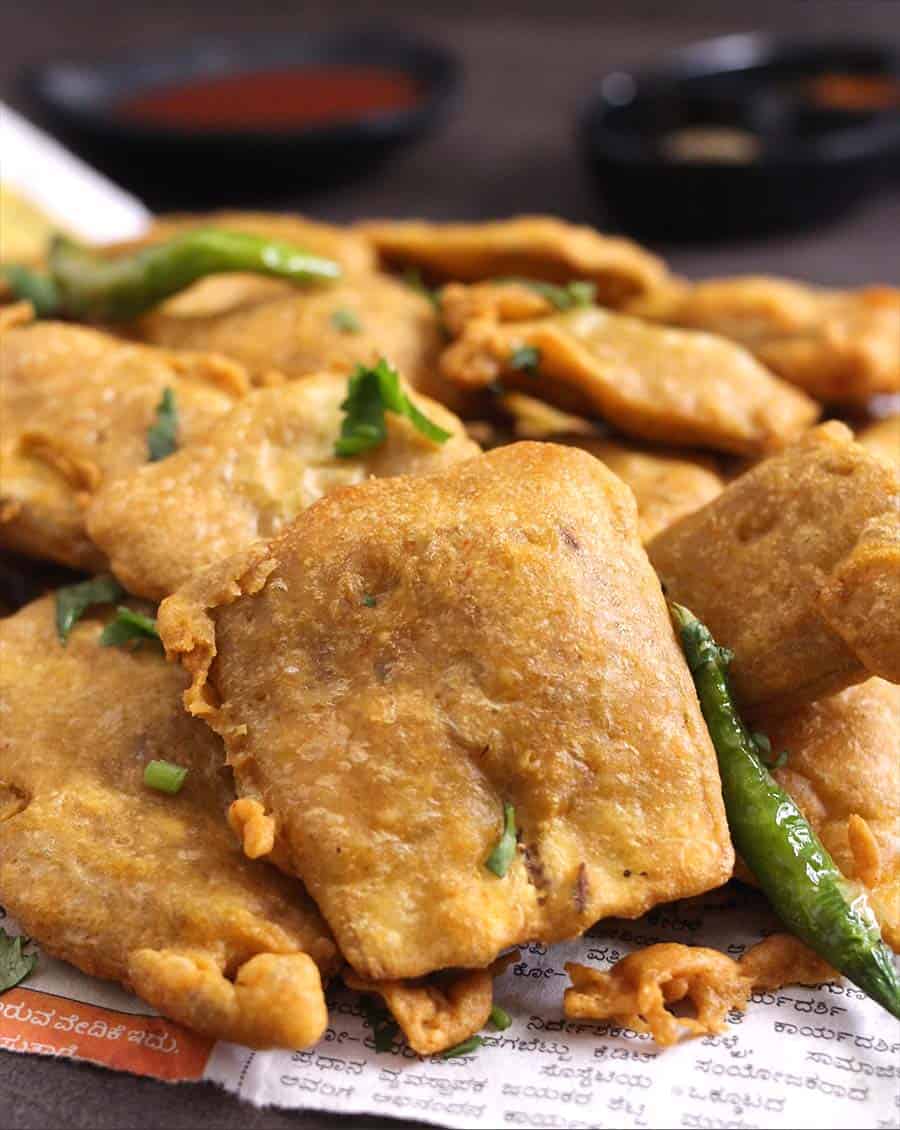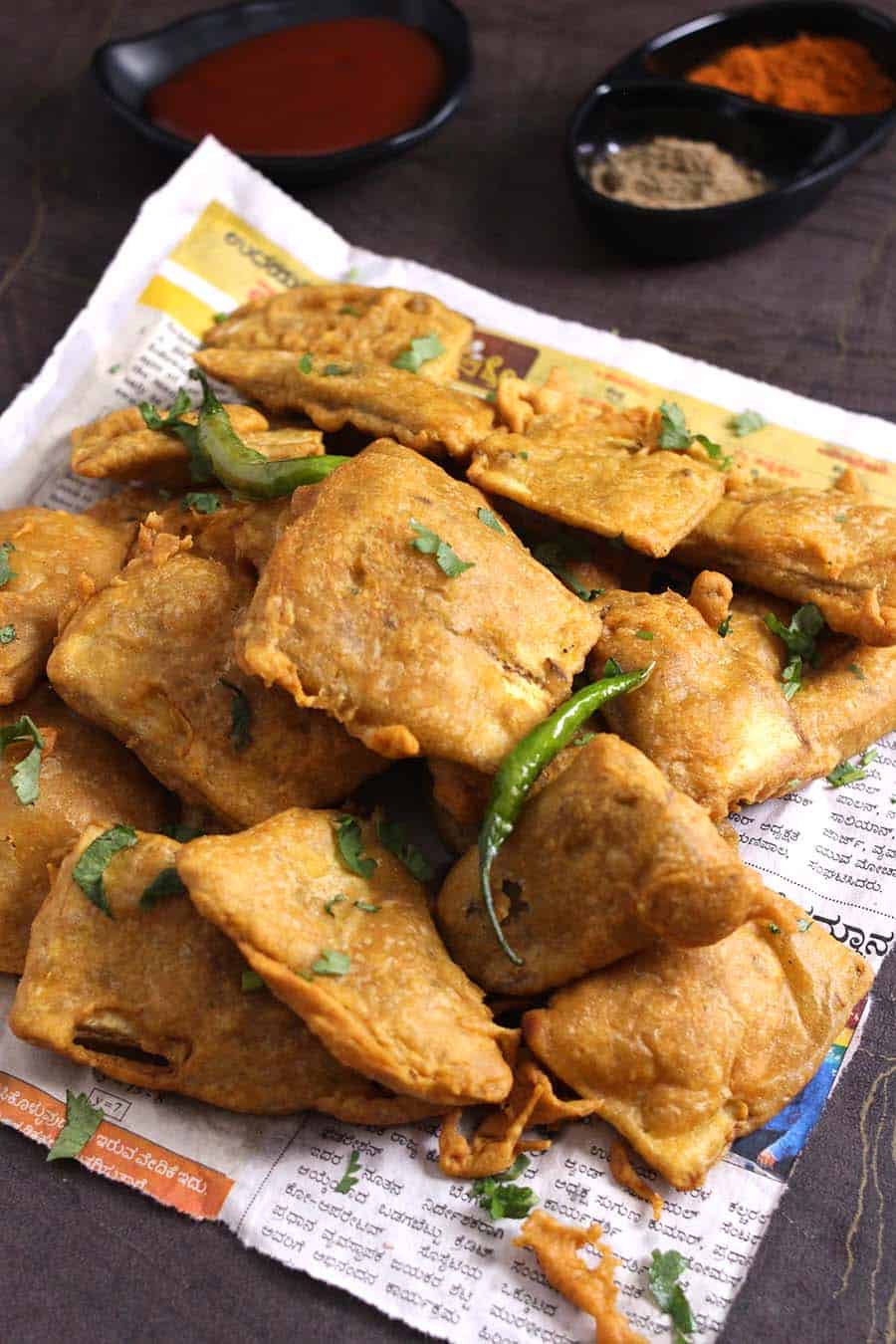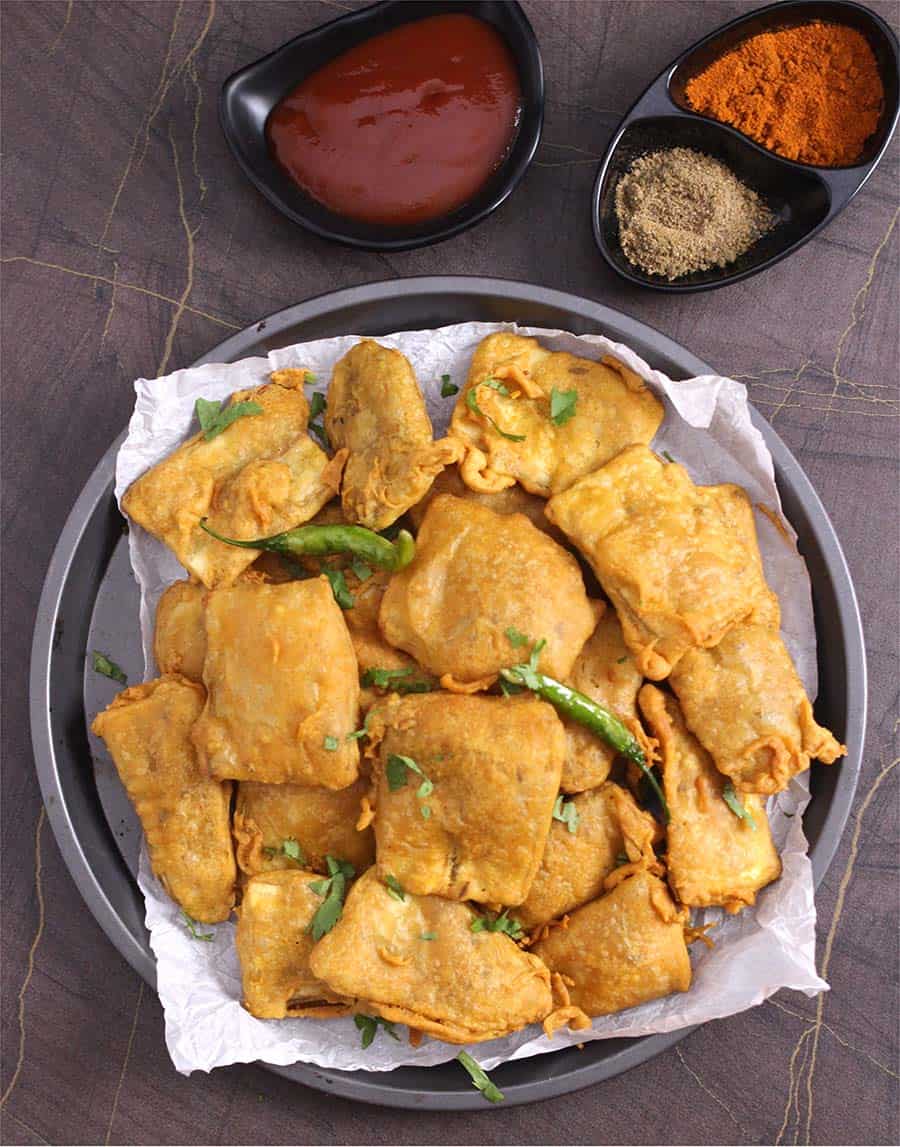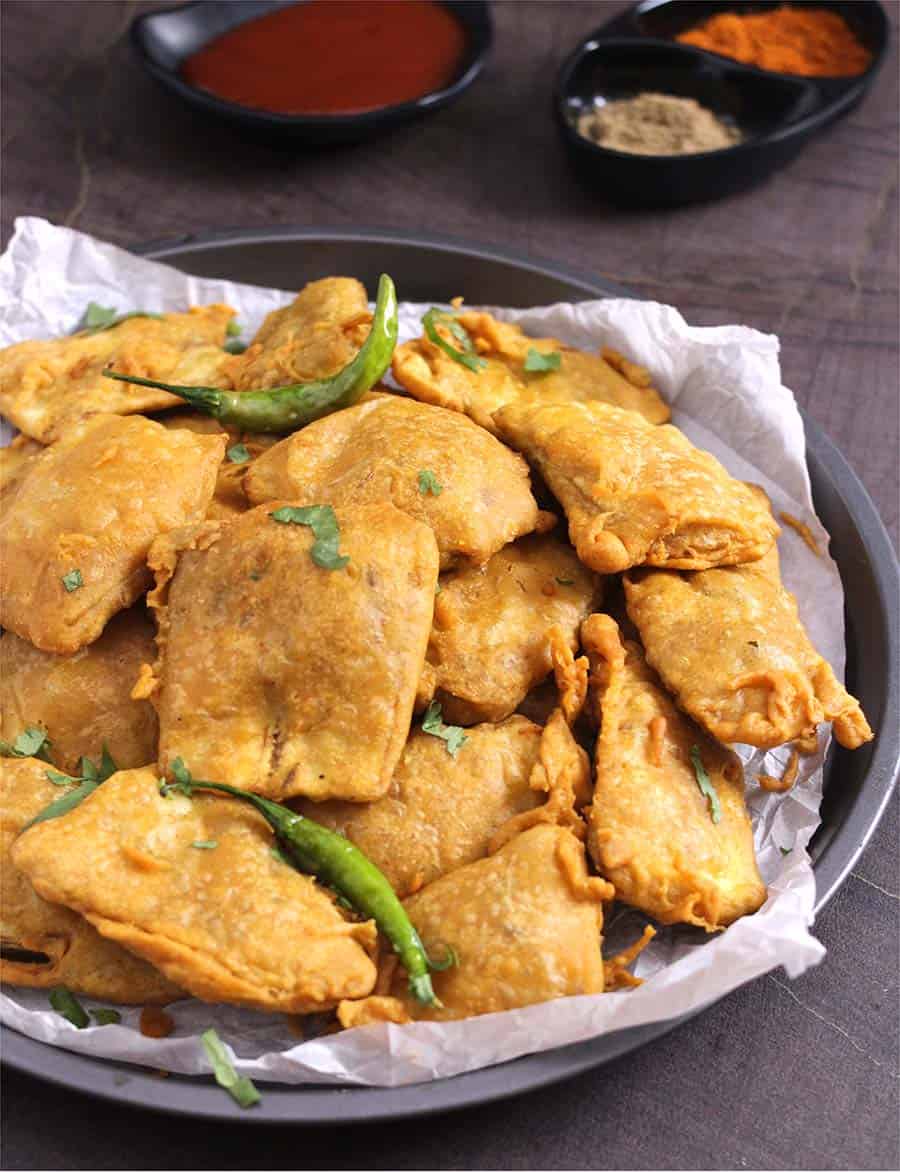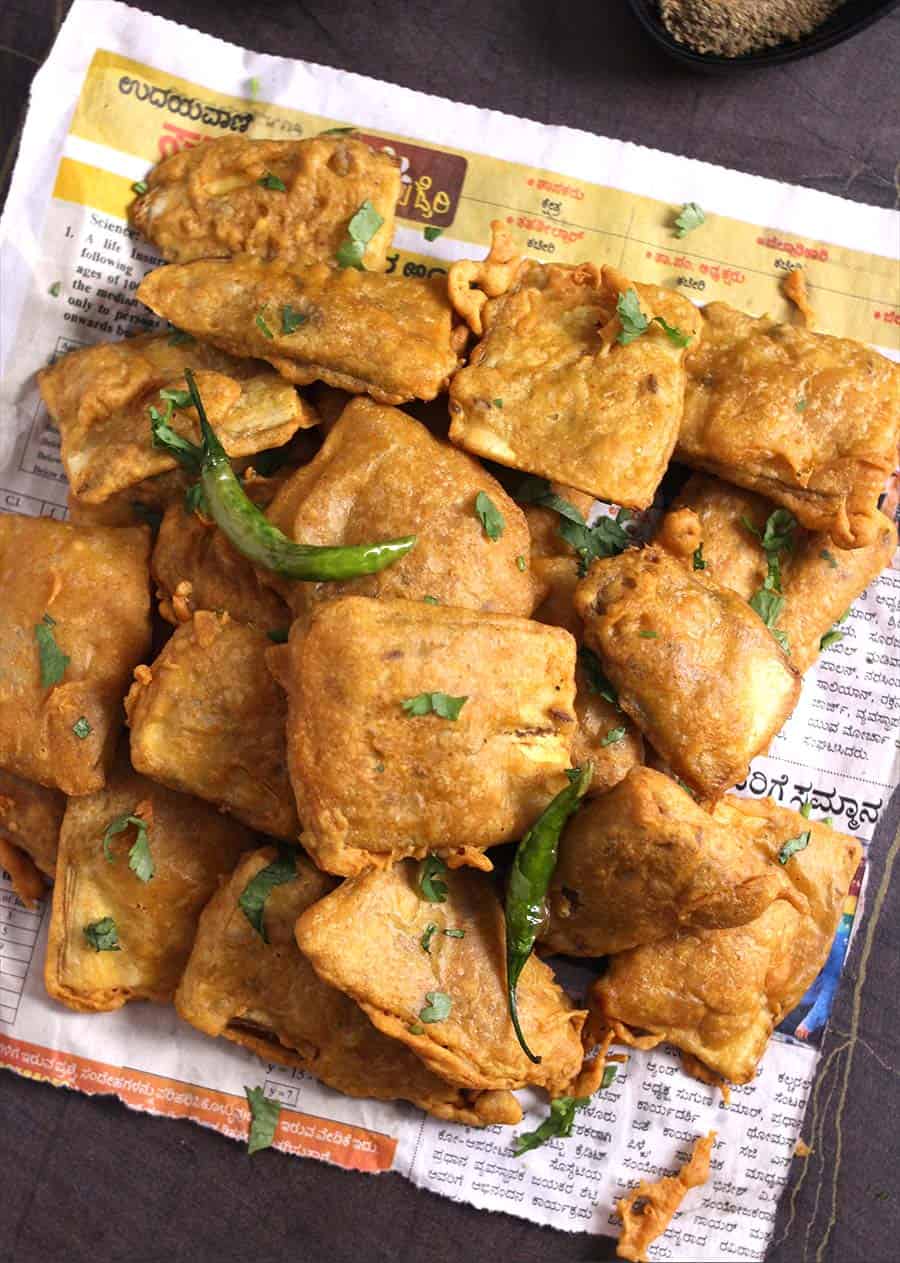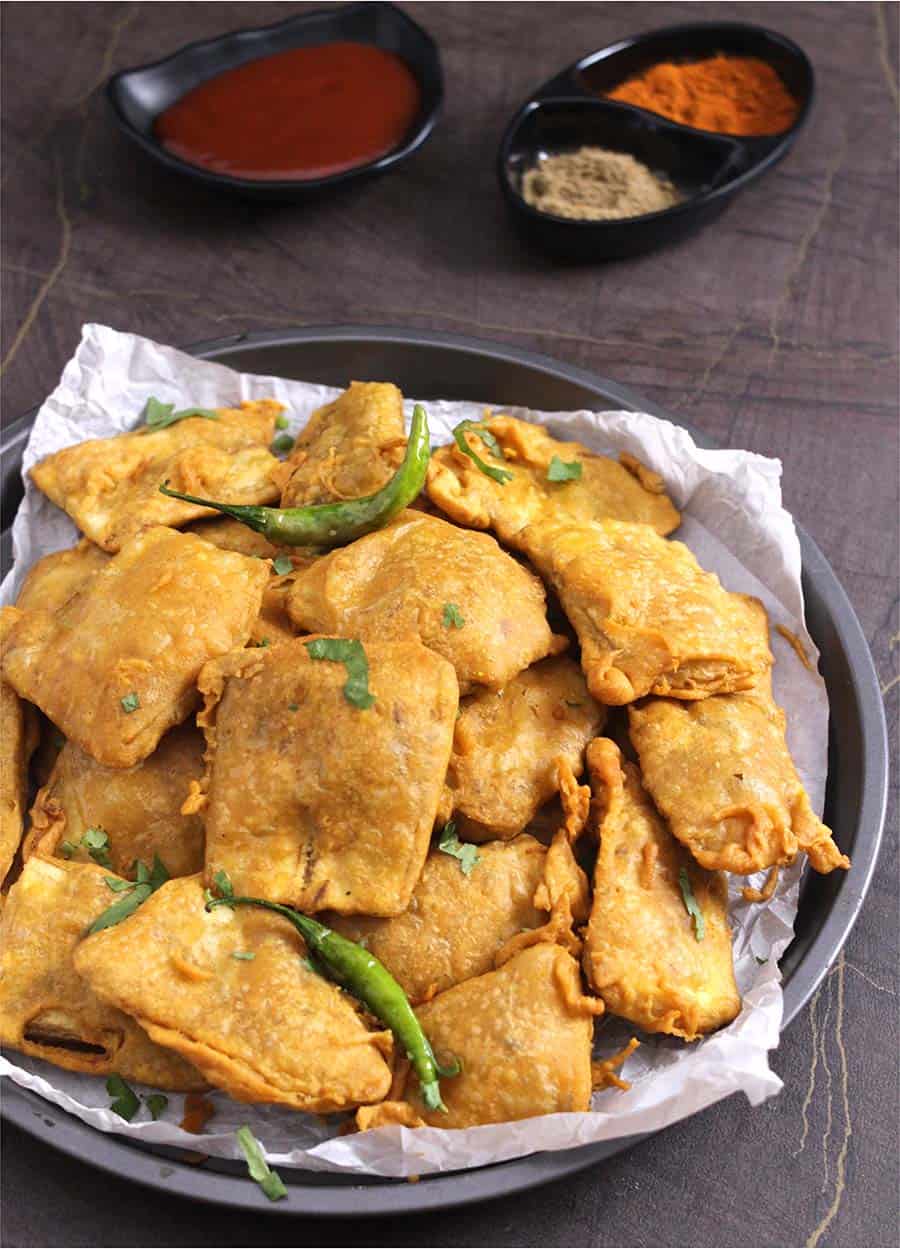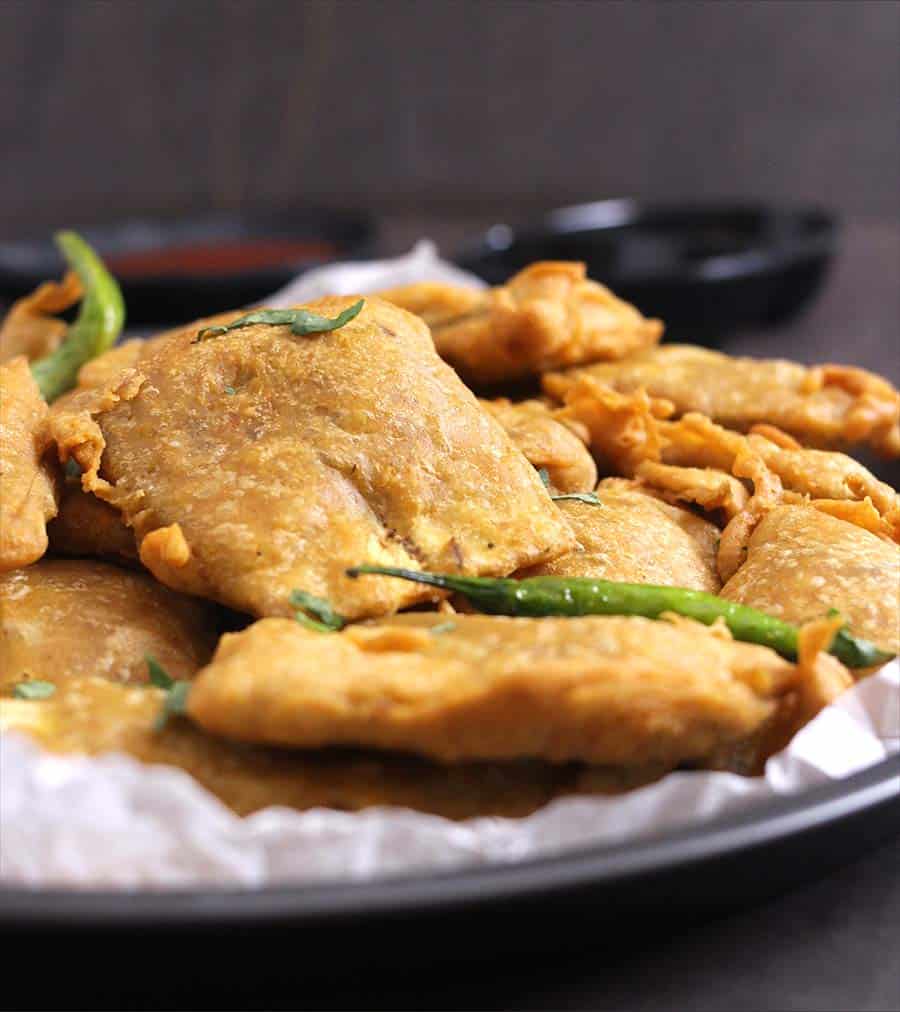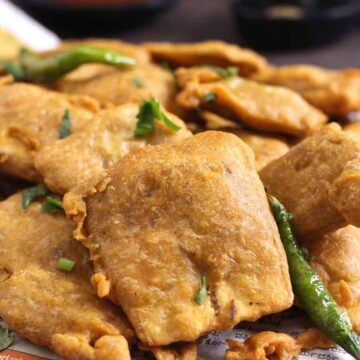Banana Pakora is an easy-to-make, spiced and crisp Indian fritter that is addictive and so delicious that you just can’t stop eating one.
It’s raining heavily outside, and all I need is some hot pakora or fritters and a cup of hot chai (tea) or coffee!!! This is my feeling in India during the monsoon season. And if you are in the coastal region of Karnataka, India, then frying fritters in coconut oil is a must 🙂 I can proudly say my mom prepares the best bajo or pakoda. And whatever I prepare today is just by watching her make it every single time.
Yes. She never measures anything. It all works with andazza and I am sure all Indian cooking happens at every home this way except for sweets or desserts 🙂 Whenever we have surprise guests at home, this pakora is something we prepare as it requires no preparation in advance, and if you are a cooking expert, then you will hardly spend less than 10 minutes making these. If you have chickpea flour and simple vegetables like potatoes, you can make pakora or bajji anytime.
Pakora, also known as pakoda, bajji, bajo is a popular Indian evening snack or street food where vegetables like eggplant, potato, and cauliflower (check the big list below) are coated in gram flour or chickpea flour batter containing some spices and are then deep-fried. With the same batter, you can prepare any of the fritters or pakora or pakoda - please mention the ones that I have missed 🙂 potato, squash, zucchini, corn, okra, sweet potato, cauliflower, broccoli, mixed vegetable, onion, paneer (tofu), cabbage, palak, aubergine (eggplant), bell pepper (capsicum), breadfruit, bread, shrimp (prawns), chicken, chickpea, crab, pork, clam. Some alternative names to pakora are pikora, phulauri, bhajiya, pakodi, ponako, pakura, fakkura, etc. What do you call it in your hometown or in your native/local language/dialect? In konkani we call it bajo.
Spices that go well with pakora, pakoda or bajji include hing (asafoetida), red chile powder (paprika or cayenne), garlic powder, onion powder, garam masala powder (curry powder), carom seeds (ajwain), cumin seeds (jeera), green chilies, coriander leaves (cilantro), chat masala, etc. You can add all of these spices, or a combination of these, or keep it as simple as possible with one or two available spices in your pantry. The choice is yours. What flavor or spice combination does your family love for their pakodas? In Mangalore and Udupi region, we make this during fasting, vrat, and upvas days and we skip adding any onion powder and garlic powder. Else you are free to add any of the spices listed.
Ingredients for Banana Pakora or Fritters or Pakoda
1 cup Besan or Chickpea flour or Gram flour 1 teaspoon Red chile powder ¼ teaspoon Hing (Asafoetida) 1 teaspoon Cumin seeds 1 teaspoon garlic powder (optional) Salt to taste 2 Raw bananas (In the picture above I have used raw bananas. You can even use sweet plantains or any other veggies from the list given above.) ½ to 1 cup Water (check details below) Oil for frying (I use coconut oil, use your preferred oil)
How to make Banana Pakora or Pakoda or Bajji?
Step I (Prepare the batter for Pakora)
Peel the bananas cut them into 3 parts horizontally and then take each piece and slice them into 3 or 4 pieces vertically. In a bowl, add chickpea flour, hing, red chile powder, cumin seeds, garlic powder, and salt to taste and mix. Now add water, starting with ½ cup, and keep whisking to form a lump-free batter. The batter should not be too thick or too thin. When you dip the banana slices, you want the batter to hold up. That is, banana slices should be coated with batter completely. If you add too much water, you can always adjust by adding more flour. I generally go by andazza (or eye measurement) as we make this very often. Giving the exact amount of water is difficult because it will vary depending on the chickpea flour and the brand you use every single time. So start water with ½ the amount of flour you have added (½ cup water for 1 cup of besan, or 1:2), and you may add up to 1 cup water or equal to the amount of flour in the recipe (1 water: 1 flour).
Step II (Frying Pakora)
In a pan on medium flame, heat oil for frying. Once the oil is hot, dip each banana slice in the batter and drop them in hot oil (5 to 6 banana pieces at a time, depending on the size of the pan). Fry till they are crispy and golden brown. Transfer it to a paper towel to absorb any oil. Banana Fritters or Pakoras are ready. Serve immediately, as they taste best when served fresh and piping hot.
Tips to make the best and perfect pakora or fritters
Consistency of batter and frying temperature is what gives you the best pakora. Do not fry them if the oil is only warm (i.e., not hot enough or yet to reach its optimum temperature). This will absorb oil and make fritters soggy. If the oil is too hot (i.e., smoking hot), the fritters will become brown on the outside faster, and the inside remains uncooked. The best frying practice is switching the flame between medium and medium-high. I do not prefer adding any baking soda. Fritters taste great without the addition of baking soda. Adjust and use the spices as needed. Do not overcrowd the pan while frying. If you want extra crispy fritters, then I have two extra tips. Either add 2 tablespoon of rice flour while making the batter or add 2 tablespoon of hot oil while preparing the batter.
Pakora or fritters can be served with a cup of hot masala chai (tea) or coffee. You can also serve it with ketchup, chili sauce, schezwan sauce, or any spicy green chutney or red chutney. Some also serve pakora with sweet tamarind-date chutney.
You can heat pakoras in the microwave or pan, but they may not be as crispy or tasty as freshly fried pakoras. Pakoras don’t turn out crispy if the consistency of the batter is not right or if the oil is too hot or too cold. Always try to fry by switching the flame between medium and medium-high to maintain consistent oil temperature. For example, we start with oil heated on a medium flame. We then drop battered pakoras in hot oil, resulting in a drop in the oil’s temperature. Therefore, switch the flame to medium-high as soon as all pakoras are dropped in oil. After a minute, switch the flame back to medium to maintain a consistent temperature till crispy pakoras are removed from the oil. It is possible that the vegetable had too much water content. Water and oil never go well together. Or maybe the oil was not hot enough for frying; hence, your fritters have soaked up the oil and turned soggy. I generally don’t like adding baking powder or baking soda to fritters or pakoras. They are generally added to make pakoras light and fluffy. Since making the batter is easy, I recommend making small batches of batter and fry the pakoras as and when needed.
Detailed recipe for Banana Pakoras (Pakoda, Bajji) | How to make Fritters?
Recipe card
For more recent updates, follow me on Pinterest, Instagram, and Twitter Click below to save it on Pinterest
